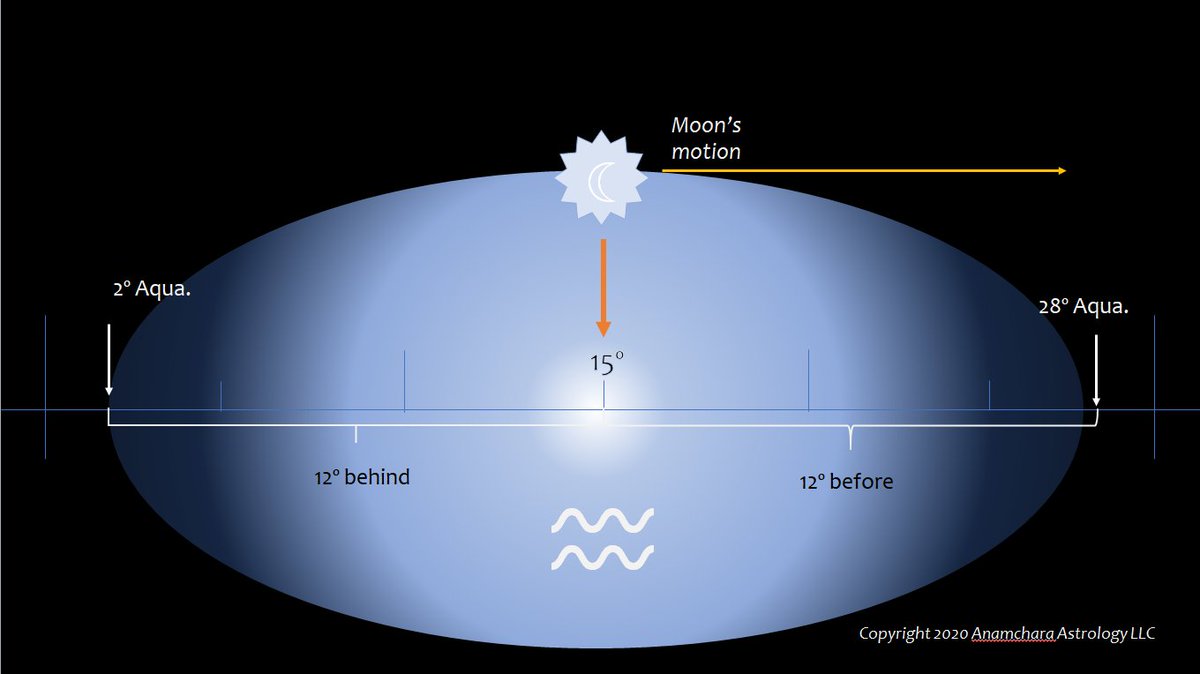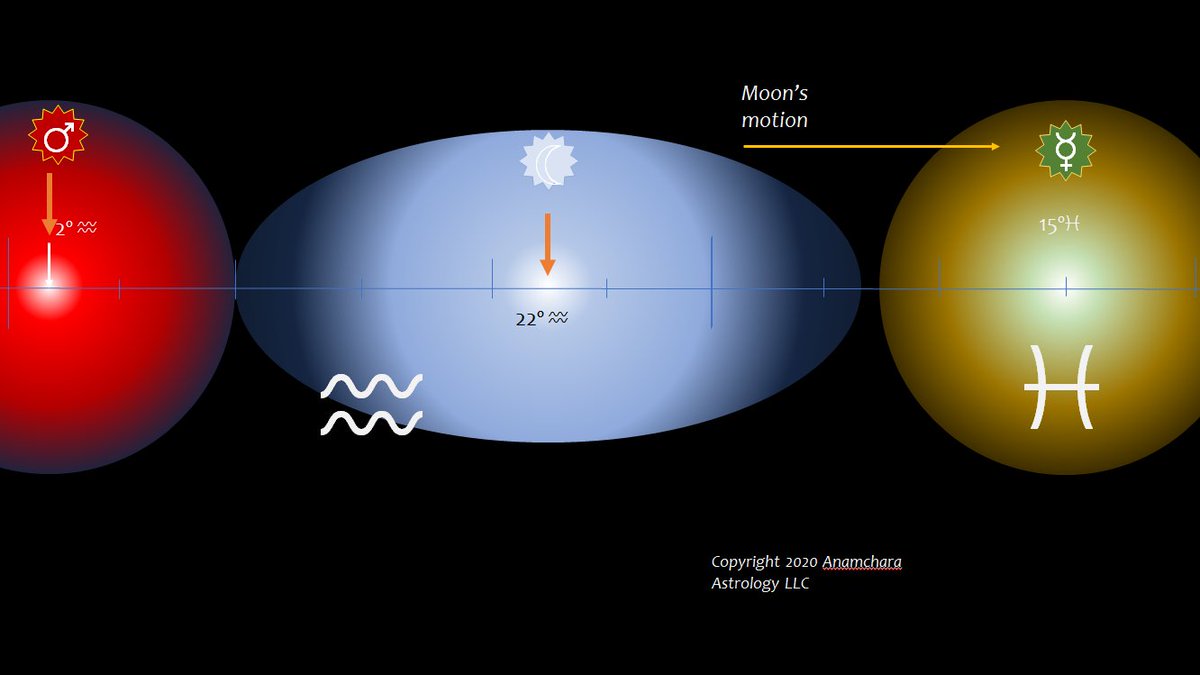Thanks to @thestrology_ for reminding me that the Moon is void of course right now, which is why today feels like a slog. That said, the Moon isn& #39;t VOC in the classical definition.
The Moon& #39;s voids and voids-of-course are an important interpretive principle—mini-thread time! 1/n
The Moon& #39;s voids and voids-of-course are an important interpretive principle—mini-thread time! 1/n
Modern practice defines "void of course" as the period of time between the Moon perfecting the final aspect she makes in a sign and her ingress into the next sign.
The classical (not Hellenistic) definition actually considered the Moon being "void" in two ways. 2/n
The classical (not Hellenistic) definition actually considered the Moon being "void" in two ways. 2/n
Context: remember that the Moon has a 12° orb, or range of influence, before and behind her, as below, assuming the Moon is at 15° Aquarius. When the leading orb of the Moon meets the trailing orb of another planet, that is when application begins.
3/n
3/n
If the Moon is "Void," it means she has completely left the orb of the planet to whom she just completed an aspect, but doesn& #39;t yet apply to another planet. Say Mars is at 2° Aquarius, Moon at 15° Aquarius, Mercury is at 15° Pisces.
4/n
4/n
When the Moon gets to 22° Aquarius, she will be out of Mars& #39; orb, but not yet touching Mercury& #39;s orb, so for this moment, she is considered "void:" she carries no energy, there& #39;s nothing to transmit, it& #39;s just white noise. This also happens to be an example of modern VoC.
5/n
5/n
But "void" is not the same thing as "Void of Course." In the classical definition, the Moon is "Void of Course" when she does not begin to apply to another aspect before she leaves the sign she is in. So imagine now that the Moon is at 22° Aqua, but Mercury is at 22° Pisces.
6/n
6/n
In this situation, the Moon will not begin to make her aspect with Mercury until she has left Aquarius and entered Pisces, as shown below. Because the Moon reaches 12° forward in orb, and Mercury 7° behind, the Moon must get to 3° Pisces before application begins.
7/n
7/n
The interpretive nuance is twofold with the classical definition of "Void of Course."
First, we get the typical modern VoC "nothin& #39; doin& #39;" mood: because the Moon can& #39;t connect energy to another planet she& #39;s not making anything happen.
8/n
First, we get the typical modern VoC "nothin& #39; doin& #39;" mood: because the Moon can& #39;t connect energy to another planet she& #39;s not making anything happen.
8/n
But the second nuance is also important: the necessity of a sign change before the Moon can even begin to apply to her next aspect suggests that the current situation must change entirely before forward motion can even be on the table.
9/n
9/n
This has obvious implications for horary or electional charts, and one of the considerations prior to judgment is to determine whether the Moon is truly Void of Course or not. If it& #39;s just a situation where she must change signs before her next aspect perfects, then
10/n
10/n
a client can be counseled to look at what needs to change as a given course of action is taking place in order for that course to find satisfying conclusion. But if the moon is truly Void of Course in the classical definition, the situation cannot even begin to resolve yet.
11/n
11/n
In a natal chart, if you have a truly VoC moon, consider the planet from which the Moon last separated: there will be a tendency to linger unnecessarily on the topics or matters governed by that planet in terms of natural rulership or house rulership.
12/n
12/n
If the moon is just void (not void of course) in a nativity, pay attention to the area of life where she is by house (and what house she rules) and that will give you a clue as to the native& #39;s possible areas of stuck-ness, or where they& #39;re most likely to spin their wheels.
13/n
13/n
If the moon is void of course in a nativity according to the classical definition, the same principle applies, and the native will have to work more diligently on the topics impacted by the moon& #39;s emptiness (which is what "void" means) in order to bring them about well.
14/n
14/n

 Read on Twitter
Read on Twitter






